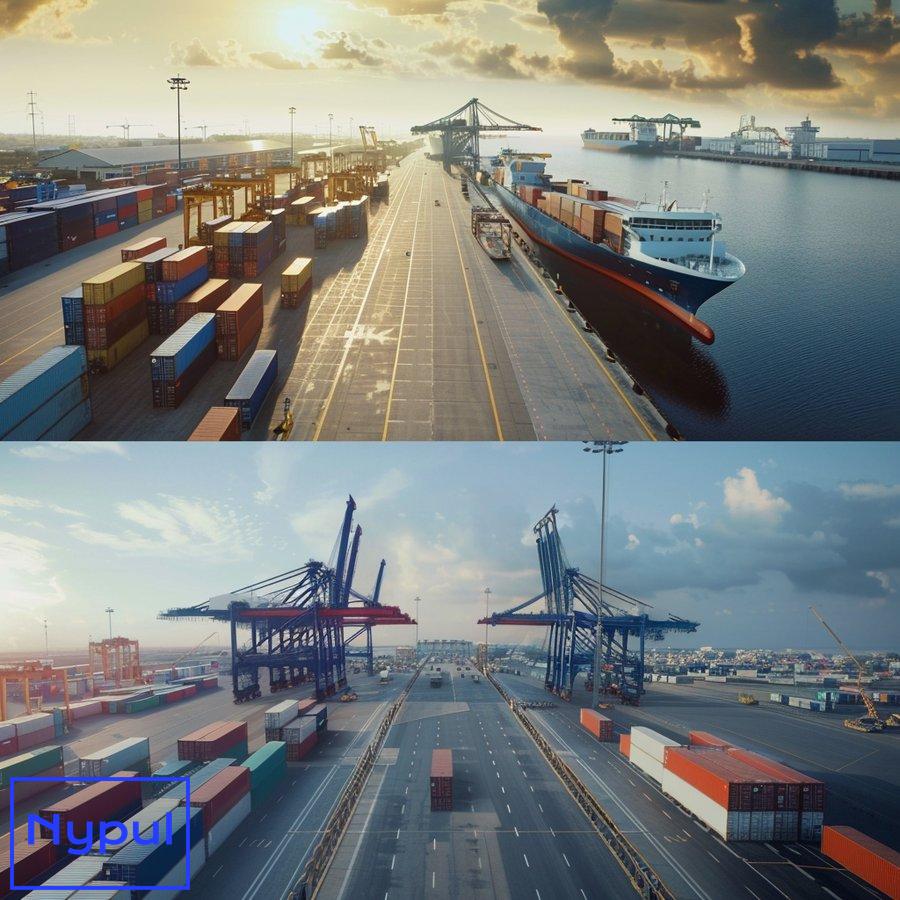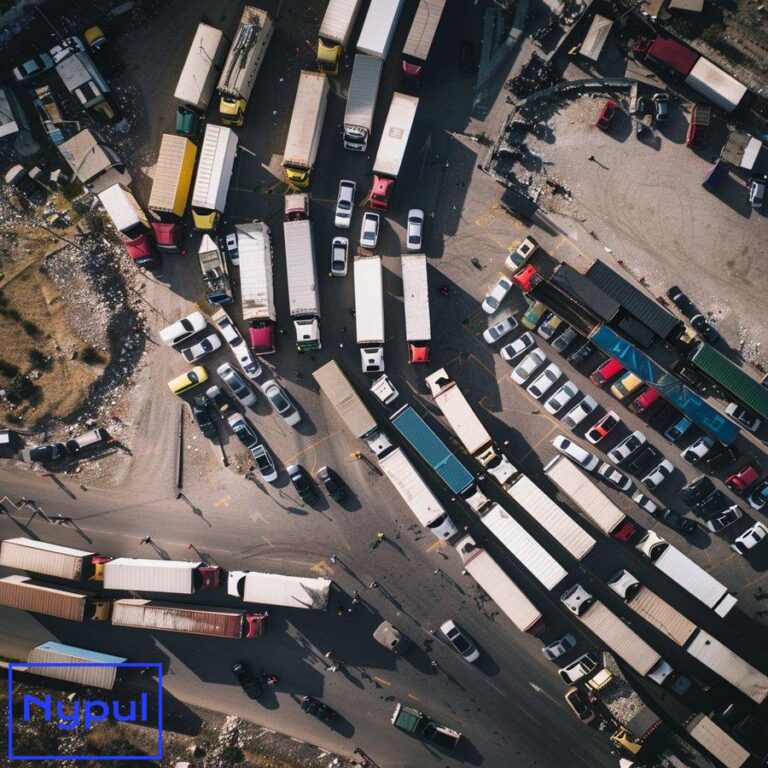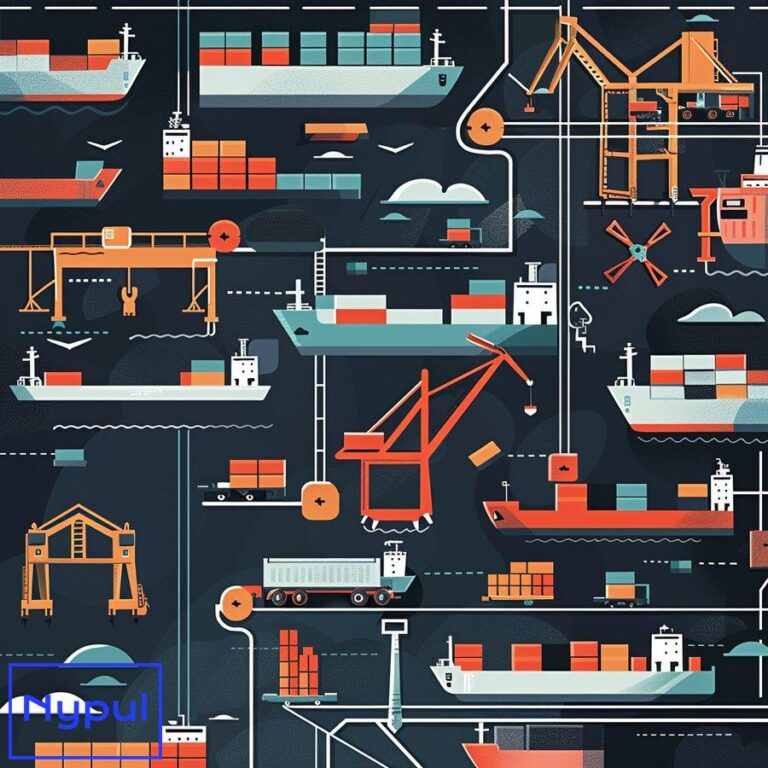What Is the CBP Regulation 10 2
What is CBP Regulation 10+2?
CBP Regulation 10+2, also known as the Importer Security Filing (ISF) and Additional Carrier Requirements rule, is a crucial import security measure implemented by U.S. Customs and Border Protection (CBP) to enhance cargo security and prevent terrorist weapons from entering the United States. This regulation requires importers and ocean carriers to provide additional cargo information to CBP before goods are loaded onto vessels bound for the U.S.
The “10+2” nomenclature refers to the 10 data elements importers must submit and the 2 data elements carriers must provide. CBP uses this information to conduct more effective and targeted screening of cargo shipments, identifying high-risk containers for inspection while facilitating the flow of legitimate trade.

Implemented on January 26, 2009, the 10+2 rule stems from the Security and Accountability for Every (SAFE) Port Act of 2006 and the Trade Act of 2002. These legislative actions aimed to strengthen maritime security in response to the heightened terrorism concerns following the September 11, 2001 attacks.
Key Features of CBP Regulation 10+2:
Scope: The rule applies to cargo arriving in the U.S. by ocean vessel, including break bulk shipments and cargo shipped to Foreign Trade Zones (FTZs).
Timing: Importers must submit the required data at least 24 hours before the cargo is laden aboard a vessel destined for the U.S.
Flexibility: CBP allows for some flexibility in the initial filing, permitting importers to provide a range of responses for certain data elements, with the expectation that more precise information will be provided as it becomes available.
Enforcement: After an initial flexible enforcement period, CBP began full enforcement of the 10+2 rule on January 26, 2010, with penalties for non-compliance.
Electronic Submission: All required information must be submitted electronically through CBP-approved data interchange systems.
The 10+2 rule represents a significant shift in U.S. import procedures, requiring closer collaboration between importers, carriers, and CBP. By collecting more detailed information earlier in the supply chain, CBP aims to enhance its risk assessment capabilities and better target potential security threats while minimizing disruptions to legitimate trade.
For importers and carriers engaged in U.S.-bound ocean shipments, understanding and complying with the 10+2 rule is essential for maintaining smooth operations and avoiding penalties. The following sections will delve deeper into the specific data elements required, compliance strategies, and the broader impact of this regulation on global supply chains.
What are the 10 Data Elements Required from Importers?
The 10 data elements required from importers under the CBP Regulation 10+2 form the core of the Importer Security Filing (ISF). These elements provide CBP with crucial information about the cargo, its origins, and the parties involved in the transaction. Importers must submit this data at least 24 hours before the cargo is laden aboard a vessel destined for the United States.

The 10 Required Data Elements:
1. Manufacturer (or Supplier) Name and Address
This identifies the entity that manufactures, grows, or produces the goods, or the party supplying the finished goods in the country from which the goods are leaving.
2. Seller Name and Address
The last known entity by whom the goods are sold or agreed to be sold. If the goods are to be imported otherwise than in pursuance of a purchase, the name and address of the owner of the goods must be provided.
3. Buyer Name and Address
The last known entity to whom the goods are sold or agreed to be sold. For goods to be imported otherwise than in pursuance of a purchase, the name and address of the owner of the goods must be provided.
4. Ship to Name and Address
The first deliver-to party scheduled to physically receive the goods after the goods have been released from customs custody.
5. Container Stuffing Location
The physical location(s) where the goods were stuffed into the container. For break bulk shipments, the physical location(s) where the goods were made “ship ready” must be provided.
6. Consolidator (Stuffer) Name and Address
The party who stuffed the container or arranged for its stuffing. For break bulk shipments, the party who made the goods “ship ready” or arranged for them to be made “ship ready” must be provided.
7. Importer of Record Number/FTZ Applicant Identification Number
The IRS number, EIN, Social Security number, or CBP assigned number of the entity liable for payment of all duties and responsible for meeting all statutory and regulatory requirements incurred as a result of importation.
8. Consignee Number(s)
The IRS number, EIN, Social Security number, or CBP assigned number of the individual(s) or firm(s) in the United States on whose account the merchandise is shipped.
9. Country of Origin
The country of manufacture, production, or growth of the article, based upon the import laws, rules and regulations of the United States.
10. Commodity Harmonized Tariff Schedule Number
The Harmonized Tariff Schedule (HTS) number to the 6-digit level.
Flexibility in Filing:
CBP recognizes that some information may not be available 24 hours before lading. Therefore, they allow for some flexibility in the initial filing:
- For data elements 1, 4, 9, and 10, importers may provide a range of acceptable responses.
- Elements 5 and 6 may be filed up to 24 hours prior to the ship’s arrival at a U.S. port if not available earlier.
Special Shipment Types:
For shipments consisting entirely of Foreign Cargo Remaining on Board (FROB), Immediate Exportation (IE), or Transportation and Exportation (T&E), only five data elements are required:
- Booking Party
- Foreign Port of Unlading
- Place of Delivery
- Ship to Name and Address
- Commodity HTS Number
Importance of Accuracy:
Accurate and timely submission of these 10 data elements is crucial for several reasons:
- It enables CBP to conduct more effective risk assessments.
- It helps prevent delays in cargo processing and release.
- It ensures compliance with the regulation, avoiding potential penalties.
Importers must have robust systems and processes in place to gather, verify, and submit this information. Many companies leverage global trade management software or work with customs brokers to manage their 10+2 filings efficiently.
Understanding these 10 data elements and their requirements is essential for any importer bringing goods into the United States by ocean vessel. By providing this information accurately and on time, importers play a crucial role in enhancing supply chain security while facilitating the smooth flow of legitimate trade.
What are the 2 Data Elements Required from Carriers?
While importers are responsible for providing 10 data elements under the CBP Regulation 10+2, ocean carriers have their own set of requirements. Specifically, carriers must submit two additional data elements to CBP. These requirements apply to all carriers with vessels calling at U.S. ports to discharge cargo.
The 2 Required Data Elements from Carriers:

1. Vessel Stow Plan
The vessel stow plan provides CBP with precise information about the location of cargo within the vessel. This data helps CBP identify high-risk containers more efficiently and conduct targeted inspections if necessary.
Key aspects of the Vessel Stow Plan requirement:
- Content: The stow plan includes basic information about the vessel and detailed data on all containers loaded on the vessel.
- Required Information:
- Vessel name
- Vessel operator
- Voyage number
- Container operator
- Container numbers
- Stow positions
- Hazardous material codes (if applicable)
- Port of load
- Port of discharge
- Timing: Carriers must submit the vessel stow plan no later than 48 hours after the vessel departs from the last foreign port. For voyages less than 48 hours in duration, the stow plan must be submitted prior to arrival at the first U.S. port.
- Format: The stow plan must be submitted via the CBP-approved electronic data interchange system in UN EDIFACT format or directly to CBP in an approved format.
2. Container Status Messages (CSMs)
Container Status Messages provide CBP with real-time information about the movement and status changes of containers bound for the U.S. This data helps CBP track container movements and identify any unusual patterns that might indicate security risks.
Key aspects of the Container Status Messages requirement:
- Content: CSMs include information about events such as container stuffing, sealing, and movements between modes of transportation.
- Required Events: Carriers must report on the following events:
- Booking Confirmed
- Terminal Gate Inspection
- Arrives/Departs a Facility
- Loaded/Unloaded from a Conveyance
- Departs Foreign Port
- Arrives at First U.S. Port
- Vessel Stow Plan Reference
- Timing: CSMs must be submitted no later than 24 hours after the message is entered into the carrier’s tracking system.
- Scope: This requirement applies to all containers destined to arrive within the limits of a U.S. port by vessel, including empty containers.
- Format: CSMs must be submitted via the CBP-approved electronic data interchange system.
Importance of Carrier Data Elements:
The vessel stow plan and container status messages play crucial roles in CBP’s layered approach to cargo security:
- They provide real-time visibility into container movements and locations.
- They allow CBP to cross-reference information provided by importers in their ISF filings.
- They enable more efficient targeting of high-risk shipments for inspection.
- They help CBP detect anomalies or discrepancies that might indicate security concerns.
Challenges and Considerations for Carriers:
Complying with these requirements can present challenges for carriers:
- Data Management: Carriers must have robust systems in place to collect, manage, and transmit large volumes of data in real-time.
- Timeliness: Meeting the submission deadlines requires efficient processes and potentially upgrades to IT infrastructure.
- Accuracy: Ensuring the accuracy of stow plans and CSMs is crucial to avoid discrepancies that might trigger unnecessary inspections or delays.
- Global Coordination: For global carriers, coordinating data collection and submission across multiple vessels and routes can be complex.
By providing these two critical data elements, carriers play an essential role in enhancing the security of the global supply chain. The vessel stow plan and container status messages, combined with the importer’s security filing, give CBP a comprehensive view of U.S.-bound cargo, enabling more effective risk assessment and targeted enforcement actions.
How Does the 24-Hour Rule Apply to 10+2 Filings?
The 24-Hour Rule is a critical component of the CBP Regulation 10+2, setting the timeline for when certain information must be submitted to U.S. Customs and Border Protection. This rule is designed to give CBP sufficient time to analyze cargo information and make informed decisions about potential security risks before the cargo is laden aboard a vessel destined for the United States.
Understanding the 24-Hour Rule:
The 24-Hour Rule predates the 10+2 regulation, having been implemented in 2002 as part of the Trade Act. It requires carriers to provide advance cargo information to CBP at least 24 hours before cargo is laden aboard a vessel at a foreign port. The 10+2 regulation expanded on this requirement by adding the Importer Security Filing (ISF) elements.
Application to 10+2 Filings:
For Importers:
- Importers must submit their ISF (the “10” part of 10+2) at least 24 hours before the cargo is laden aboard the vessel at the foreign port.
- This applies to all 10 data elements required from importers, with some flexibility for certain elements.
For Carriers:
- The original 24-Hour Rule still applies to carriers, requiring them to submit the cargo manifest data 24 hours before lading.
- The additional “2” elements (vessel stow plan and container status messages) have different timelines:
- Vessel Stow Plan: Due no later than 48 hours after departure from the last foreign port.
- Container Status Messages: Due within 24 hours of the message being entered into the carrier’s system.
Flexibility Within the 24-Hour Rule:
CBP recognizes that some information may not be available 24 hours before lading. Therefore, they allow some flexibility:
- For four of the ISF elements (Manufacturer, Ship To Party, Country of Origin, and Commodity HTS Number), importers may provide a range of acceptable responses initially, updating with more specific information as it becomes available.
- Two elements (Container Stuffing Location and Consolidator) may be filed up to 24 hours prior to arrival at a U.S. port if not available earlier.
Importance of the 24-Hour Rule in 10+2:
The 24-Hour Rule serves several critical functions within the 10+2 framework:
Risk Assessment: It provides CBP with a crucial time window to analyze cargo information and identify potential high-risk shipments before they are loaded onto U.S.-bound vessels.
Targeted Inspections: If CBP identifies a high-risk shipment, the 24-hour window allows them to request additional information or order an inspection before the cargo leaves the foreign port.
Supply Chain Visibility: By requiring information 24 hours before lading, CBP gains earlier visibility into the supply chain, enhancing overall security.
Coordination: The rule allows time for coordination between CBP, carriers, and foreign authorities if any security concerns are identified.
Challenges and Considerations:
Adhering to the 24-Hour Rule within the 10+2 framework can present challenges:
Data Availability: Importers and carriers must have systems in place to gather and transmit required data well in advance of shipping.
Supply Chain Coordination: All parties in the supply chain must be aligned to ensure timely data submission.
Last-Minute Changes: Any changes to shipment details close to the lading time can create compliance challenges.
Global Time Differences: For global supply chains, coordinating data submission across different time zones can be complex.
Best Practices for Compliance:
To ensure compliance with the 24-Hour Rule within the 10+2 framework:
- Implement robust data management systems that can collect and transmit information quickly and accurately.
- Establish clear communication channels with all supply chain partners.
- Develop standard operating procedures for gathering and submitting required data.
- Utilize automated systems and alerts to ensure timely submissions.
- Train staff on the importance of timely and accurate data submission.
- Regularly audit and review compliance processes to identify areas for improvement.
The 24-Hour Rule is a cornerstone of the 10+2 regulation, providing CBP with the time and information needed to enhance cargo security. By understanding and adhering to this rule, importers and carriers play a crucial role in securing the global supply chain while facilitating the flow of legitimate trade.
What are the Penalties for Non-Compliance with 10+2?
Compliance with the CBP Regulation 10+2 is not optional. U.S. Customs and Border Protection has established a system of penalties for non-compliance to ensure that importers and carriers adhere to the requirements of the Importer Security Filing (ISF) and Additional Carrier Requirements. Understanding these penalties is crucial for all parties involved in shipping cargo to the United States by ocean vessel.
Types of Non-Compliance:
CBP identifies several types of non-compliance with the 10+2 regulation:
Late Filing: Submitting the required information after the specified deadlines.
Inaccurate Filing: Providing incorrect or incomplete information in the ISF or carrier submissions.
Failure to File: Not submitting the required information at all.
Penalty Structure:
CBP’s approach to penalties for 10+2 non-compliance is based on a tiered system, considering factors such as the severity of the violation, the violator’s compliance history, and whether the violation was intentional or negligent.
Liquidated Damages:
- For each violation of the ISF requirements, CBP may assess liquidated damages equal to the value of the merchandise involved in the violation, or $5,000, whichever is less.
- For violations related to the vessel stow plan or container status message requirements, liquidated damages of $5,000 per violation may be assessed.
Penalties Under 19 U.S.C. § 1595a(b):
- For intentional violations, CBP may assess penalties equal to the domestic value of the cargo.
Other Enforcement Actions:
Do Not Load (DNL) Orders: For severe or repeated non-compliance, CBP may issue a DNL order, preventing the cargo from being loaded onto the vessel.
Increased Inspections: Non-compliant shipments may be subject to increased inspections, potentially leading to delays and additional costs.
Suspension of Privileges: For C-TPAT members, repeated non-compliance could result in suspension or revocation of CSuspension of Privileges: For C-TPAT members, repeated non-compliance could result in suspension or revocation of C-TPAT benefits, which include reduced inspections and expedited processing.
Mitigating Penalties:
Importers and carriers can take steps to mitigate penalties for non-compliance with the 10+2 regulation:
1. Proactive Compliance Programs: Establishing comprehensive compliance programs that include regular training and audits can help ensure adherence to the 10+2 requirements.
2. Use of Technology: Implementing automated systems for data collection and submission can reduce the risk of errors and late filings.
3. Communication with CBP: Open lines of communication with CBP can help address compliance issues before they escalate into penalties.
4. Corrective Actions: If a violation occurs, promptly addressing the issue and taking corrective actions can demonstrate good faith to CBP.
Understanding the penalties associated with non-compliance is essential for importers and carriers involved in U.S.-bound shipments. By prioritizing compliance with the 10+2 regulation, stakeholders can avoid costly penalties and contribute to enhanced cargo security.
How Does 10+2 Impact Supply Chain and Logistics?

The implementation of CBP Regulation 10+2 has profound implications for supply chain management and logistics operations. By requiring importers and carriers to provide additional data elements in advance, the regulation enhances cargo security while also introducing new challenges and opportunities for businesses involved in international trade.
Enhanced Security Measures:
One of the primary goals of the 10+2 regulation is to improve security within the supply chain. By requiring detailed information about cargo before it arrives in the U.S., CBP can better assess risks and identify potential threats. This proactive approach has several benefits:
- Risk Assessment: CBP can analyze data to identify high-risk shipments, allowing for targeted inspections.
- Prevention of Smuggling: The regulation helps deter smuggling and trafficking by increasing scrutiny on cargo movements.
- Improved Response Times: With better data, CBP can respond more quickly to security threats, minimizing potential disruptions.
Operational Efficiency:
While the 10+2 regulation increases security, it also necessitates changes in how businesses manage their logistics operations:
- Data Management Systems: Companies must invest in robust data management systems to collect, verify, and submit required information accurately and on time.
- Coordination Among Stakeholders: Effective communication between importers, carriers, customs brokers, and CBP is essential for ensuring compliance.
- Streamlined Processes: Businesses may need to reevaluate their supply chain processes to incorporate the new requirements effectively.
Impact on Supply Chain Costs:
The additional compliance requirements associated with 10+2 can lead to increased operational costs for importers and carriers:
- Technology Investments: Companies may need to invest in technology solutions for data collection and reporting.
- Training Costs: Staff training on compliance requirements adds another layer of expense.
- Potential Delays: Non-compliance or late submissions can result in delays at ports, leading to increased shipping costs.
Despite these challenges, effective implementation of 10+2 can lead to long-term benefits:
- Reduced Inspection Rates: Importers with a strong compliance history may experience fewer inspections, leading to faster processing times.
- Enhanced Reputation: Companies that prioritize compliance may strengthen their relationships with customs authorities and improve their overall reputation in the industry.
What Tools are Available for 10+2 Compliance?
To navigate the complexities of CBP Regulation 10+2 effectively, importers and carriers can leverage various tools designed to facilitate compliance. These tools range from software solutions to consulting services that help streamline data collection, submission processes, and overall supply chain management.
1. Global Trade Management Software
Global Trade Management (GTM) software provides a comprehensive solution for managing international trade operations. Key features include:
-
Automated Data Collection: GTM software automates the collection of required data elements from various sources within an organization.
-
Compliance Checks: Many GTM solutions offer built-in compliance checks against CBP regulations, alerting users to potential issues before submission.
-
Reporting Capabilities: These tools often include reporting features that allow businesses to track their compliance history and identify areas for improvement.
Some popular GTM software solutions include SAP Global Trade Services, Oracle Global Trade Management, and Amber Road.
2. Customs Brokers
Working with a licensed customs broker can significantly ease the burden of compliance with 10+2 requirements. Customs brokers offer expertise in navigating complex regulations and provide valuable services such as:
-
Filing Assistance: Brokers assist importers in preparing and submitting ISF filings accurately and on time.
-
Regulatory Updates: They stay up-to-date on changes in regulations, ensuring that clients remain compliant.
-
Risk Management Advice: Brokers can provide insights into risk management strategies tailored to specific industries or cargo types.
Choosing a reputable customs broker with experience in 10+2 compliance is essential for successful collaboration.
3. Training Programs
Investing in training programs for staff involved in logistics operations is crucial for ensuring compliance with 10+2 regulations. Training programs should cover:
-
Regulatory Requirements: Employees should understand the specific data elements required under 10+2 and how to gather this information effectively.
-
Data Submission Processes: Training should include instruction on how to use relevant software tools or systems for submitting ISF filings.
-
Best Practices for Compliance: Staff should be educated on best practices for maintaining accurate records, communicating with stakeholders, and addressing potential compliance issues proactively.
Many organizations offer specialized training programs focused on customs compliance; these programs can be delivered online or in-person.
How Does 10+2 Enhance Cargo Security?
The primary objective of CBP Regulation 10+2 is to enhance cargo security by requiring additional information from importers and carriers before goods arrive at U.S. ports. This regulation plays a vital role in safeguarding national security while facilitating legitimate trade by allowing U.S. Customs and Border Protection (CBP) to assess risks more effectively.
Key Security Enhancements from 10+2
- Proactive Risk Assessment
- The requirement for importers to submit detailed information at least 24 hours before lading enables CBP to conduct thorough risk assessments based on real-time data.
-
By analyzing this information early in the shipping process, CBP can identify high-risk shipments that may require further inspection upon arrival.
-
Targeted Inspections
- With access to comprehensive data about cargo origins, manufacturers, buyers, and shipping routes, CBP can focus its inspection resources on shipments deemed high-risk.
-
This targeted approach minimizes disruptions for compliant shipments while enhancing overall security measures against potential threats.
-
Increased Visibility into Supply Chains
- The collection of detailed information provides CBP with greater visibility into global supply chains.
-
Enhanced visibility allows authorities to track trends in cargo movements that could indicate suspicious activity or emerging threats.
-
Collaboration with Industry Partners
- The 10+2 regulation fosters collaboration between CBP, importers, carriers, customs brokers, and other stakeholders involved in international trade.
-
By working together towards common security goals, all parties contribute to creating a safer trading environment.
-
Deterrence Against Malicious Activities
- The stringent requirements of the 10+2 regulation serve as a deterrent against smuggling activities by increasing scrutiny on cargo movements.
- Knowing that additional data will be required may discourage individuals or organizations from attempting illegal activities through U.S. ports.
Challenges Posed by Enhanced Security Measures
While the 10+2 regulation significantly enhances cargo security, it also presents challenges that stakeholders must navigate:
- Compliance Burden
-
The requirement for timely submission of detailed information places an additional burden on importers and carriers who must ensure accuracy while managing tight timelines.
-
Potential Delays
-
Increased scrutiny may lead to longer processing times at ports if high-risk shipments require further examination by customs officials.
-
Cost Implications
- Implementing systems for data collection and submission incurs costs related to technology investments as well as potential training expenses for staff involved in compliance efforts.
Conclusion
CBP Regulation 10+2 represents a significant advancement in enhancing cargo security within international trade frameworks. By requiring timely submission of detailed information from both importers and carriers before goods reach U.S. shores, this regulation empowers U.S. Customs and Border Protection (CBP) with critical tools needed for effective risk assessment while fostering collaboration across industry partners engaged in global commerce.
Through proactive measures such as targeted inspections based on real-time data analysis combined with increased visibility into supply chains—stakeholders not only contribute towards national security objectives but also facilitate legitimate trade flows efficiently without compromising safety standards along the way.






